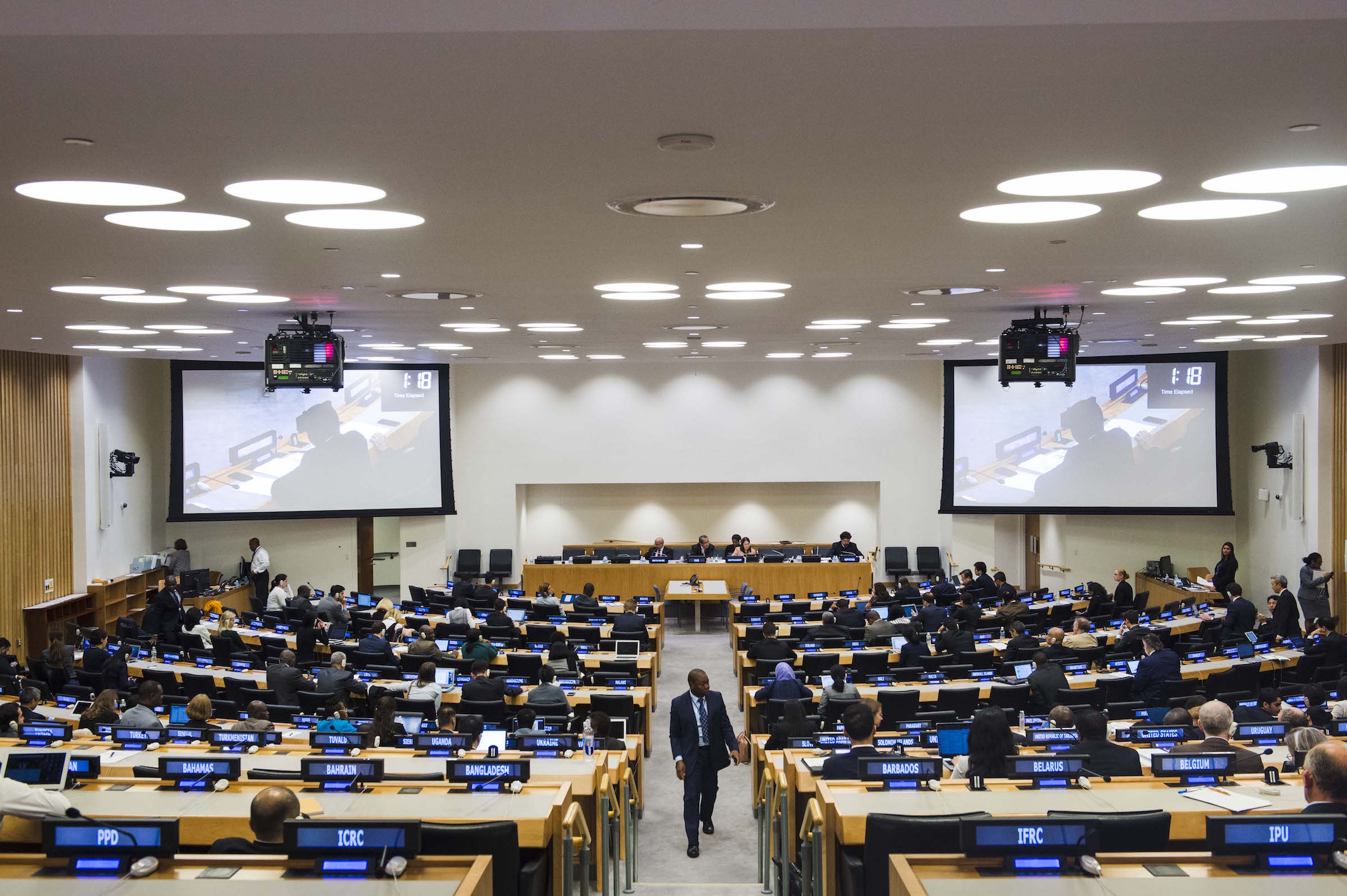
Meet the General Assembly Second Committee

When the United Nations was formed in October of 1945, Chapter IV of the UN Charter mandated the formation of the General Assembly and allowed for the General Assembly to “establish such subsidiary organs as it deems necessary for the performance of its functions. (Article 22)” Upon the adoption of its Rules of Procedures the General Assembly established its six main committees. The focus of this AMUN Accords blog will be the General Assembly’s Second Committee.
The Second Committee addresses the Economic and Financial aspects of development for all Member States. The Second Committee is key to developing the UN’s operational activities as they relate to development and meeting the Sustainable Development Goals. The work of the Second Committee focuses on 10 themes:
- macroeconomic policy
- operational activities for development
- financing for development
- groups of countries in special situations
- globalization and interdependence
- eradication of poverty
- information and communication technologies for development
- agriculture and food security
- sustainable development
- sovereignty of the Palestinian people over their natural resources
Additionally, GA2 considers specific issues relating to groups of countries in special situations, such as the topics discussed in 2017: the Arab Population in the occupied Syrian Golan over their natural resources and the permanent sovereignty of the Palestinian people in the Occupied Palestinian Territory, including East Jerusalem.
Under the rules of the General Assembly, the work of GA Committees can only begin once the general debate of the Plenary body is concluded. This occurs annually from early to mid-September. The time frame and schedule of the committee work is decided by the General Assembly at the beginning of each session. The Second Committee generally begins its work in the first week of October and concludes its work in the last week of November. The Second Committee does routinely make use of short extensions to guarantee the completion of its work. During its working time the Second Committee typically passes about 45 resolutions, mostly by consensus. Most resolutions are first discussed, then tabled by the G77+China before they are negotiated by the Committee. All of the G77+China proposals are commonly submitted by one Member State each year. For example, in 2017 Ecuador submitted all the proposals on behalf of the G77+China.
The Second Committee often holds side events and joint meetings with the Economic and Social Council as well as meet with Executive Secretaries of the Regional Commissions to discuss in depth specific economic or development topics. The Second Committee does not hear reports from any subsidiary UN bodies. Substantive and Organizational support for the Second Committee is handled by the United Nations Department of Economic and Social Affairs (DESA). On some specific agenda items, other UN bodies takes lead on substantive support of the Second Committee. The ECOSOC Affairs Branch (EAB) of the UN’s Department for General Assembly and Conference Management (DGACM) provides the Secretariat for the Second Committee. The delegates working with or on the Second Committee often work on the Economic and Social Council (ECOSOC) or ECOSOC funds or programmes.
Since 2012, per Resolution A/RES/66/246, all proceedings of the General Assembly Second Committee are broadcast live on UN Live TV in the six official languages of the UN and the language of the speaker. Archives of past Second Committee meetings are also available. All documents produced by the proceedings of the Second Committee are also available, including: lists of draft proposals, reports to the General Assembly Plenary, Voting Records and all Resolutions.
In its most recent session, the General Assembly Second Committee, currently chaired by His Excellency Sven Jürgenson of Estonia, opened with a general debate, followed by a keynote address from Professor Arvind Panagariya, who serves the School of International and Public Affairs at Columbia University as Professor of Economics and Jagdish Bhagwati Professor of Indian Political Economy. As side events, joint meetings, and meetings with the regional bodies Executive Secretaries took place, GA2 adopted 42 proposals.
While the work of the Second Committee is of a more behind-the-scenes nature as the work to establish programs that help least developed countries rise to the Sustainable Development Goals, it is nonetheless important. In 2017 they discussed a wide range of topics including:
- Oil slicks on the Lebanese shores,
- World Bee Day,
- Agricultural Technology for Sustainable Development,
- Combating dust and sandstorms,
- Science, Technology and Innovation for development,
- Culture and Sustainable Development, and
- South-South Cooperation.
In recent years, perhaps the most important action taken by the Second Committee was Resolution A/RES/64/236 a resolution passed by the General Assembly, based on a report of the GA2 that was key to helping get the United Nations Conference on Sustainable Development Rio+20.
Follow the news of the General Assembly Second Committee at the UN News Center or by following @UN on Twitter or following the United Nations Facebook Page.
Keep Up With The Accords
More to read
The AMUN Accords is a premier resource for fact-based Model United Nations simulations. We are always looking for new contributors. Want to write for the AMUN Accords? Check out out the submission guidelines and then get in touch!




